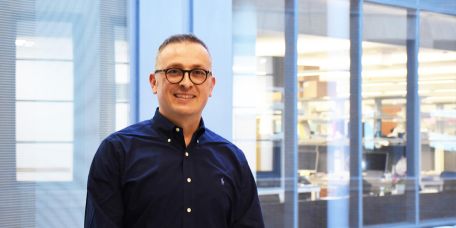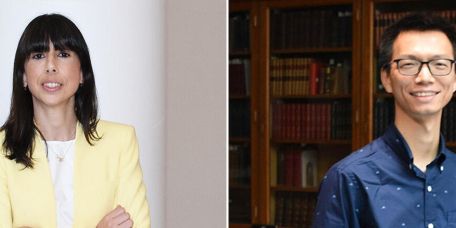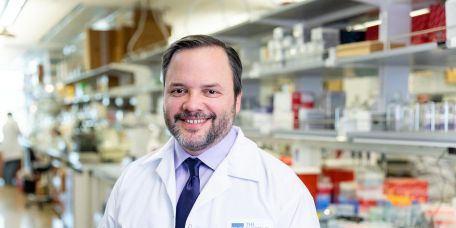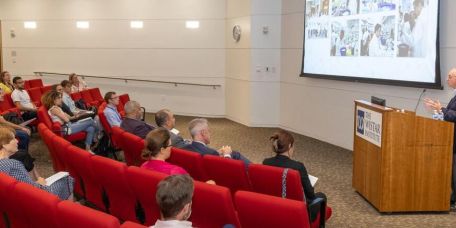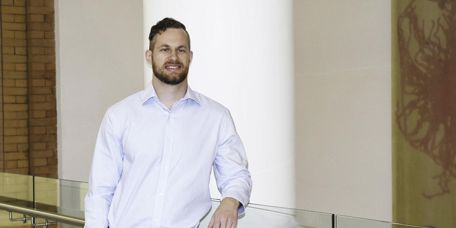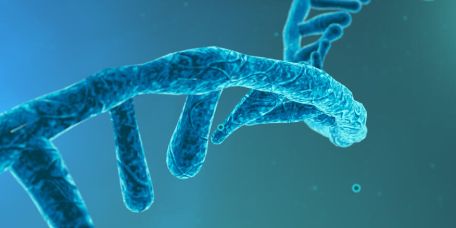The Wistar Institute
The Wistar Institute Recruits Vaccine Researcher Amelia Escolano, Ph.D., and Immunologist Nan Zhang, Ph.D., as Assistant Professors
PHILADELPHIA — (Sept. 1, 2021) — The Wistar Institute, an international biomedical research leader in cancer, immunology and infectious diseases, welcomes Amelia Escolano, Ph.D., and Nan Zhang, Ph.D., as assistant professors. Escolano’s research foc…
The Wistar Institute Appoints Italo Tempera, Ph.D., as Associate Director for Cancer Research Career Enhancement of Its Cancer Center
PHILADELPHIA — (Aug. 31, 2021) — The Wistar Institute announces the appointment of Italo Tempera, Ph.D., as Associate Director for Cancer Research Career Enhancement at the Institute’s Cancer Center. In this role, Tempera, who is also an associate p…
Wistar Welcomes Assistant Professors Amelia Escolano, Ph.D., and Nan Zhang, Ph.D.
Wistar is pleased to welcome two new assistant professors starting September 1. Dr. Amelia Escolano researches new vaccine approaches against highly mutating viruses. She will join the Vaccine & Immunotherapy Center. “I am thrilled to have the o…
Wistar Scientists Unveil Mechanism That Stops Cancer Progression by Interfering With Cancer Cell Metabolism
During progression from a precancerous lesion to an aggressive tumor and then metastasis, cancer cells rewire their metabolism to support increased energy demands due to continuous growth and adapt to unfavorable conditions in the surrounding enviro…
Wistar Scientists Unveil Widespread Tumor Suppression Mechanism That Stops Cancer Progression by Interfering With Cancer Cell Metabolism
PHILADELPHIA — (Aug. 25, 2021) — According to a study by The Wistar Institute, the tumor suppressor Parkin, whose levels are reduced in different cancer types, causes acute metabolic and oxidative stress, suppresses mitochondrial trafficking, and bl…
The BEAT-HIV Collaboratory Receives More Than $29 Million in NIH Funding for HIV Cure Research
PHILADELPHIA — (Aug. 17, 2021) — The Wistar Institute announces that the National Institutes of Health (NIH) granted a five-year, $29.15 million Martin Delaney Collaboratories for HIV Cure Research award to the BEAT-HIV Martin Delaney Collaboratory…
Congratulations BTT Program and BRT Apprenticeship Graduates!
On August 12, Wistar hosted a ceremony for the Biomedical Technician Training (BTT) Program graduates of 2020 and 2021 and the Biomedical Research Technician (BRT) Apprenticeship graduates of 2021. Dr. Dario Altieri, Wistar president and CEO, welcom…
The Wistar Institute Recruits Daniel Claiborne, Ph.D., as Caspar Wistar Fellow
PHILADELPHIA — (July 30, 2021) — The Wistar Institute, an international biomedical research leader in cancer, immunology and infectious diseases, announces the appointment of Daniel Claiborne, Ph.D., as Caspar Wistar Fellow in the Vaccine & Immu…
Wistar Scientists Described Fundamental Gene Expression Mechanism With Implications in Immunity and Cancer
In a recent Cell Reports paper, Dr. Bin Tian and team revealed a mechanism that has far-reaching implications in development and diseases, including immunity and cancers. The lab studies RNA biology to understand just how gene expression is regulate…
Wistar Scientists Discovered Fundamental and Widespread Gene Expression Control Mechanism that Potentially Creates Proteins at Distinct Locations in the Cell, with Implications in Immunity and Cancers
PHILADELPHIA — (July 20, 2021) — Alternative polyadenylation (APA) is an RNA processing mechanism that regulates gene expression by generating different ends on RNA transcripts of the same gene. Though it affects more than half of human genes, the s…

